The Real Deal on Monroe Piercings: A Piercer’s Honest Guide
People walk into my studio all the time asking for that iconic upper lip piercing, the one that mimics a classic beauty mark. It’s a gorgeous look, for sure. But my job isn’t just to make things look good; it’s to make sure you walk out with a piercing that’s safe, healthy, and won’t cause you a world of trouble down the line. To be frank, this isn’t a piercing you get on a whim.
In this article
So, let’s skip the fluff you see online. I want to give you the real, unfiltered advice from someone who’s seen it all. We’re going to talk about what’s really under your skin, what the piercing process is actually like, and most importantly, how to care for it so you don’t end up with a problem. Think of this as a partnership—a good piercer does their part, but a great piercing depends on you being informed and committed.
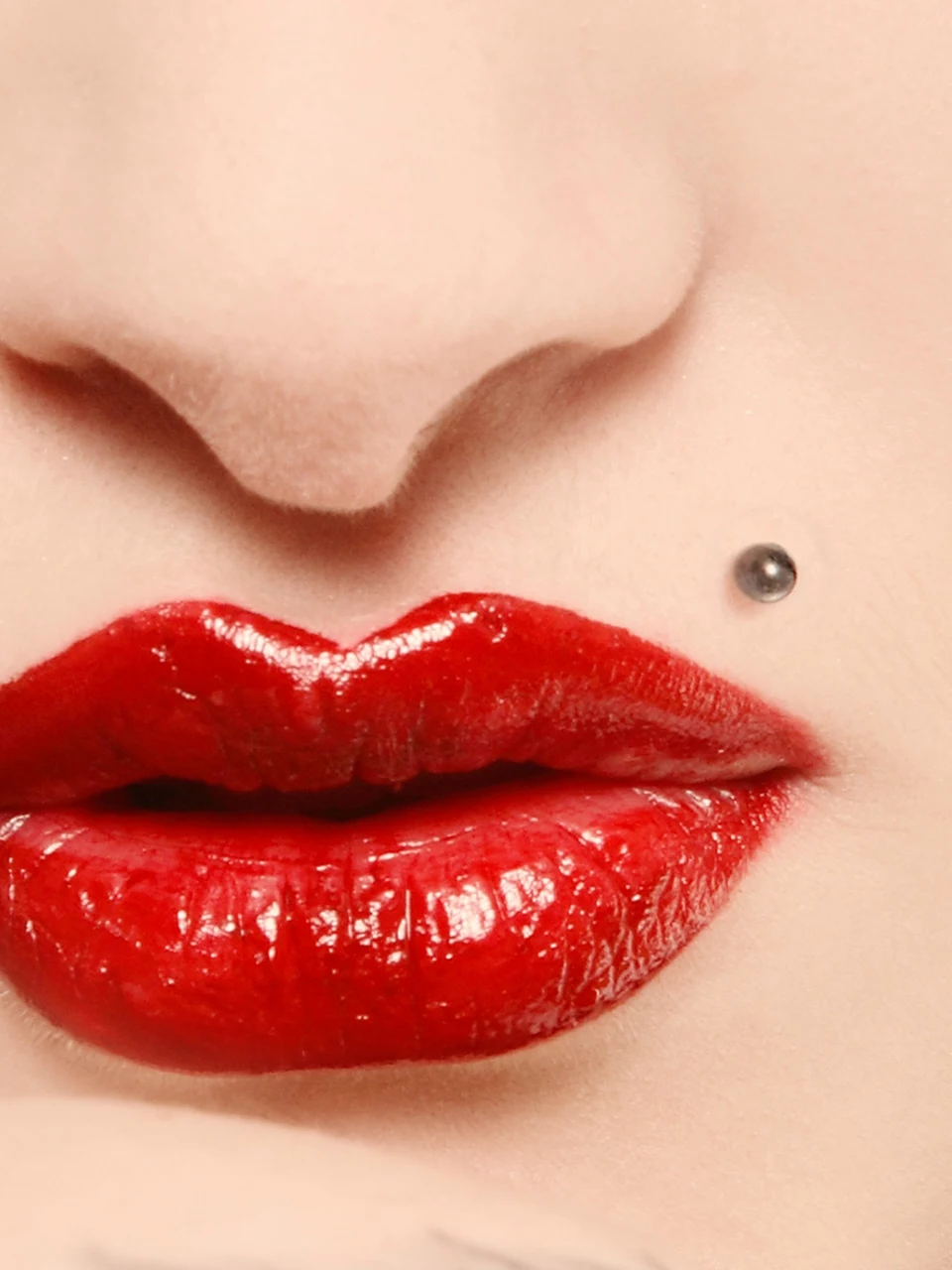
First Things First: Your Lip’s Anatomy (And Why It Matters)
Before a needle gets anywhere near you, a pro has to understand what they’re working with. Your upper lip is surprisingly complex, full of muscle, blood vessels, and nerves. Where we place that little stud is everything.
The Muscle, Nerves, and Blood Supply
Your lips are powered by a circular muscle (the orbicularis oris) that lets you smile, talk, and kiss. We pierce directly through this muscle. It’s dense and has a ton of blood flow, which is great for fast healing but also means you should expect some initial bleeding and swelling. It’s totally normal.
We also have to be mindful of the nerves and a significant artery in the upper lip. While hitting a major vessel is rare for a trained professional, it’s a risk. This is a huge reason you should NEVER let an amateur or your buddy do this piercing. An experienced piercer knows how to read the anatomy to find a safe path, minimizing both bleeding and the risk of any long-term nerve issues.
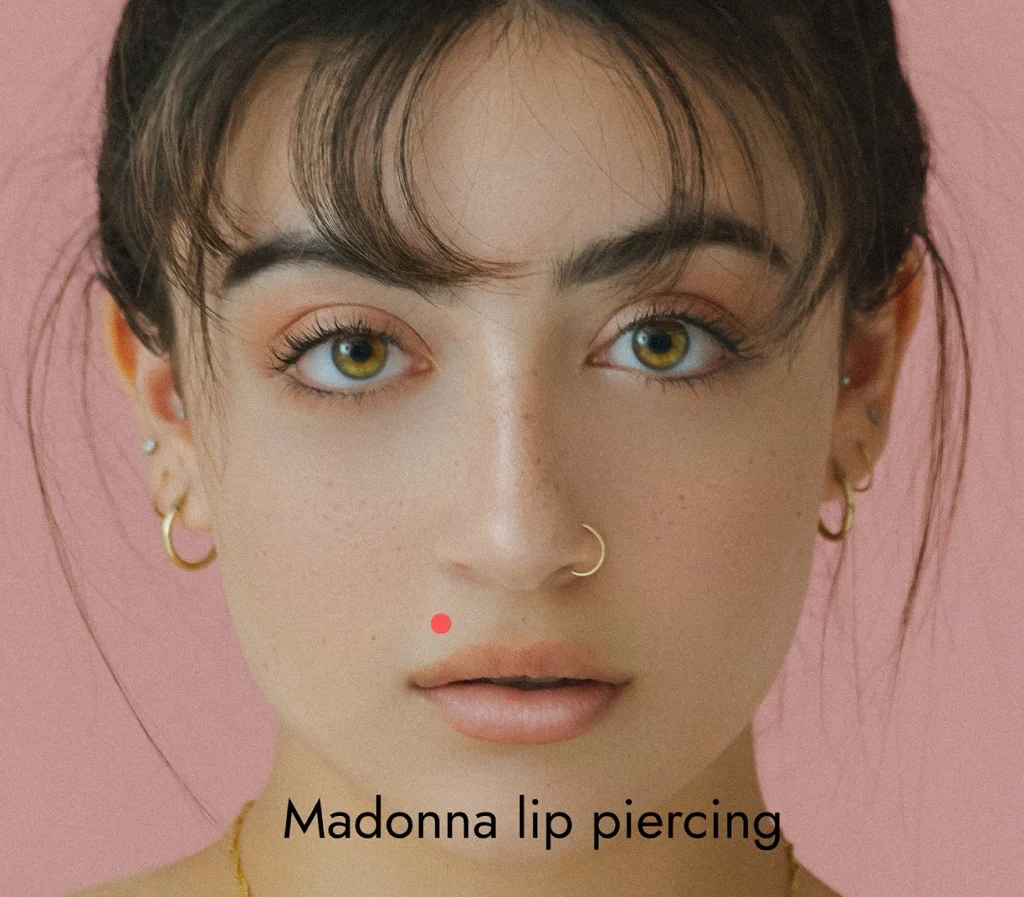
The Big One: Your Teeth and Gums
Okay, let’s have a serious talk. The single biggest long-term risk of this piercing is damage to your mouth. The jewelry is a labret stud, which has a flat disc on the inside that rests against your gums and teeth. Over time, this can be a real problem.
- Gum Recession: That little disc can constantly rub against your gum tissue, causing it to wear away. And once that tissue is gone, it’s gone for good. This can lead to super sensitive teeth and a higher risk for cavities.
- Tooth Damage: The jewelry can also chip or scrape away the enamel on your teeth, especially the canines. I’ve seen people who clench their jaw in their sleep cause some serious wear and tear this way.
A good piercer will place the piercing to minimize these risks, looking for a fleshy spot away from your direct gum line. But honestly? The risk is never zero. This is a permanent consideration you have to be comfortable with.

Finding a Pro and What to Budget
So, how do you find someone you can trust to navigate all that anatomy? You need to do a little homework.
Look for a piercer who is a member of a reputable professional piercing organization. These groups have high standards for safety and ethics. When you visit a studio, here are the green flags to look for:
- A clean, professional environment. It should feel more like a clinic than a back room.
- They have an autoclave (a sterilization machine) and can show you test records proving it works.
- They open all sterilized equipment—needles, jewelry, tools—from a sealed package right in front of you.
- They have a portfolio of healed work, not just fresh, shiny piercings. This shows their technique leads to good long-term results.
Heads up! If you see a piercing gun, dirty surfaces, cheap-looking jewelry, or if they pressure you into a decision, walk out. Seriously. Just leave.
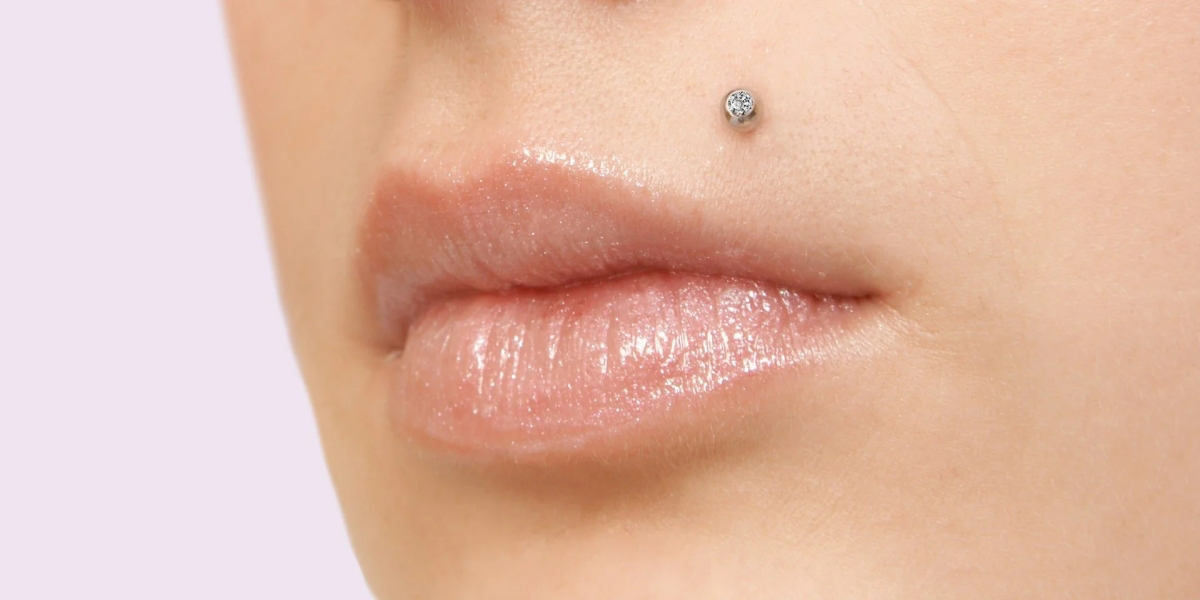
Let’s Talk Money
A quality piercing is an investment in your body, so don’t hunt for bargains. Here’s a realistic breakdown of what you can expect to pay in a reputable US studio:
- Piercing Fee: This covers the piercer’s time, expertise, and all the sterile supplies. Expect this to be between $40 and $80.
- Initial Jewelry: A basic, implant-grade titanium labret stud will likely cost between $30 and $60. Fancy tops will be more.
- Aftercare Spray: A can of sterile saline wound wash is about $10-$15 at any pharmacy.
- The Downsize: Don’t forget this! You’ll need a shorter post after a few weeks, which usually costs $15-$30.
So, your all-in starting cost is probably somewhere between $95 and $185. If a place quotes you $40 for everything, that’s a major red flag about their jewelry quality.
The Piercing Process: Step-by-Step
Once you’ve found your pro, here’s what should happen. The whole process is calm, controlled, and sterile.

First, we’ll have a chat. We’ll go over the risks and check your anatomy to see if you’re a good candidate. If your lip is too thin or your gum line is too high, an ethical piercer will tell you and might suggest a different piercing.
Next, we mark the spot with a sterile skin marker. You get the final say! We’ll give you a mirror and have you smile and talk to make sure you love the placement. Crucially, we’ll also check where the back of the jewelry will sit inside your mouth.
Then, it’s time for the main event. You’ll take a deep breath in and, as you exhale slowly, the piercing happens. We use a brand new, super-sharp hollow needle for a clean pass. It’s over in less than a second. What does it feel like? On a pain scale of 1-10, most people say it’s a 4 or 5. It’s a quick, sharp pinch—more surprising than excruciating—and way less intense than most cartilage piercings.
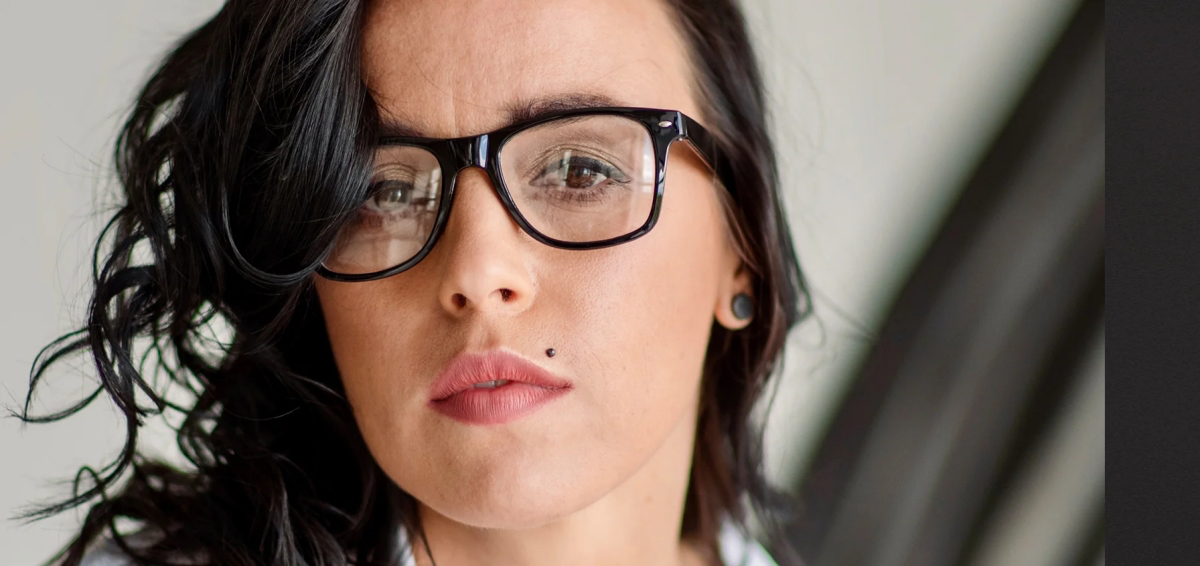
Right after, we insert the jewelry, which will be a long post to allow for swelling. We clean you up, and then go over the aftercare instructions. You should get a printed sheet to take home.
Healing, Aftercare, and the All-Important Downsize
The piercing itself is the easy part. The next 8 to 12 weeks of healing are on you. Be diligent!
Your Daily Routine (Keep It Simple!)
Less is more. Your body knows how to heal; you just have to keep the area clean.
- Outside: Spray the piercing 1-2 times a day with a sterile saline solution. Don’t use cotton balls or swabs—their fibers can get stuck. Just spray and let it air dry or gently pat with a clean paper towel. No soap, no alcohol, no peroxide!
- Inside: Rinse your mouth with plain water after you eat or drink anything that isn’t water. You can use an alcohol-free mouthwash once or twice a day, but water is usually enough.
For the first couple of weeks, stick to softer foods like smoothies, yogurt, and soup. Be careful with big sandwiches or burgers—it’s surprisingly easy to chomp down on that long initial post! Cut your food into smaller bites.
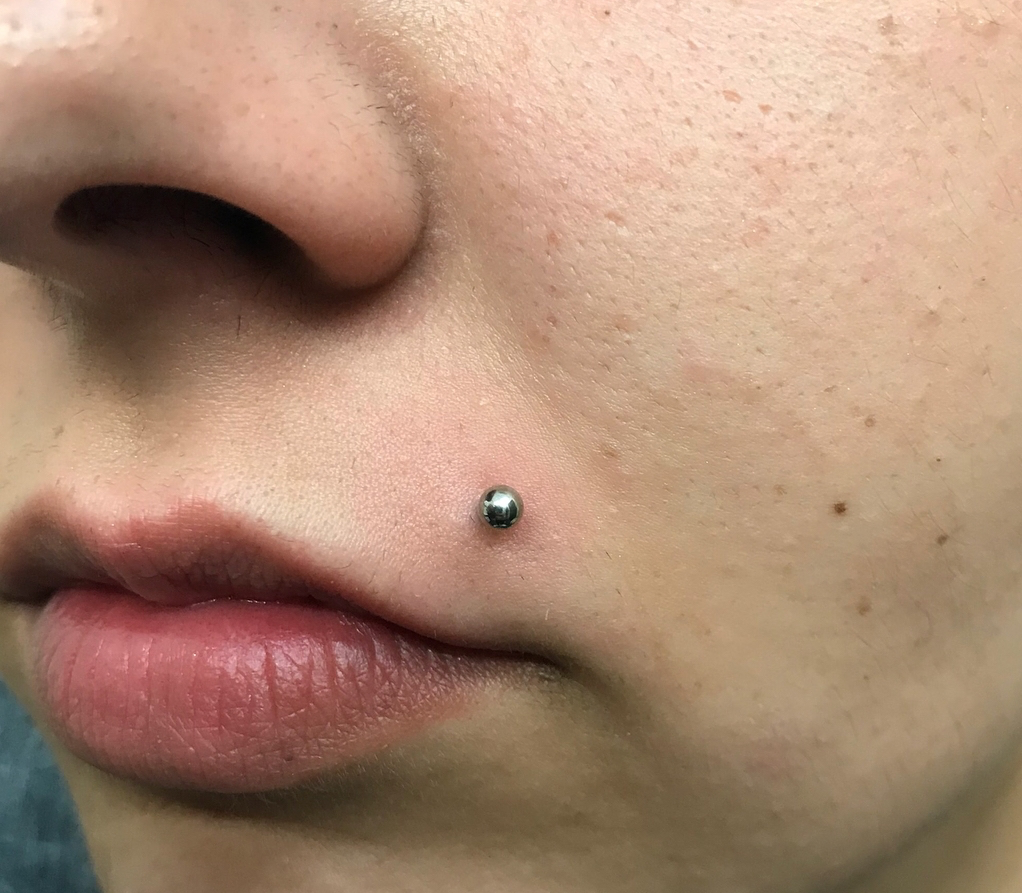
The Critical Downsize Appointment
After 2 to 4 weeks, the initial swelling will have calmed down. You must go back to your piercer to get a shorter post. This is non-negotiable.
Why is it so important? A post that’s too long will snag on everything and move around excessively, irritating the piercing and increasing contact with your teeth and gums. I’ll never forget a client who skipped their downsize appointment. They came back a month later with the flat disc completely sunken into the inside of their lip tissue. It was painful and difficult to fix. Please, don’t skip that appointment!
Troubleshooting: Irritation vs. True Infection
It’s easy to panic at the first sign of redness, but most issues are just simple irritation, not a full-blown infection.
What’s Normal (And Just Annoying): In the first week or two, expect swelling, redness, and tenderness. You might also see some clear or whitish fluid that forms ‘crusties.’ This is just lymph fluid, a normal part of healing. If the piercing gets red or puffy later on, it’s usually from being bumped, slept on, or from using harsh aftercare products.

When to ACTUALLY Worry (And See a Doctor): The signs of a real infection are much more dramatic. We’re talking thick, yellow or green pus, a foul odor, skin that’s hot to the touch, or red streaks spreading from the area. If you see these signs, DO NOT take the jewelry out. That can trap the infection inside and cause an abscess. See a doctor right away for antibiotics.
Jewelry Materials and Styles
The material your jewelry is made from is just as important as the piercing technique. Cheap metal is the #1 cause of healing problems.
For a new piercing, stick to these implant-grade materials:
- Implant-Grade Titanium (ASTM F-136): This is the gold standard. It’s nickel-free, lightweight, and what’s used for medical implants.
- Niobium: Another pure, biocompatible metal that’s very safe for initial piercings.
- 14k or 18k Solid Gold: Make sure it’s solid gold (not plated) and from a reputable body jewelry company that can verify it’s nickel-free and biocompatible.
Good to know: You’ll want jewelry that is either internally threaded (the screw is on the top, not the post) or threadless (push-pin style). These won’t scrape the inside of your piercing channel like cheap, externally threaded jewelry does.

By the way, if you ever need to hide it for work or an MRI, you can have a piercer swap the metal top for a clear or skin-tone retainer once it’s fully healed. Don’t try to do this yourself early on!
A Lifelong Commitment
A Monroe piercing can be a stunning addition to your look, but it requires a bit of lifelong awareness. Every few months, pull your lip back and take a peek at your gums and teeth. Get to know what they look like so you can spot any changes. And always, always point out your piercing to your dentist during check-ups so they can help you keep an eye on things.
When it’s done right and cared for well, it’s a fantastic piercing. Just be honest with yourself about the risks and the commitment. Finding a great piercer and following their advice to the letter is the best way to ensure you’ll be loving it for years to come.
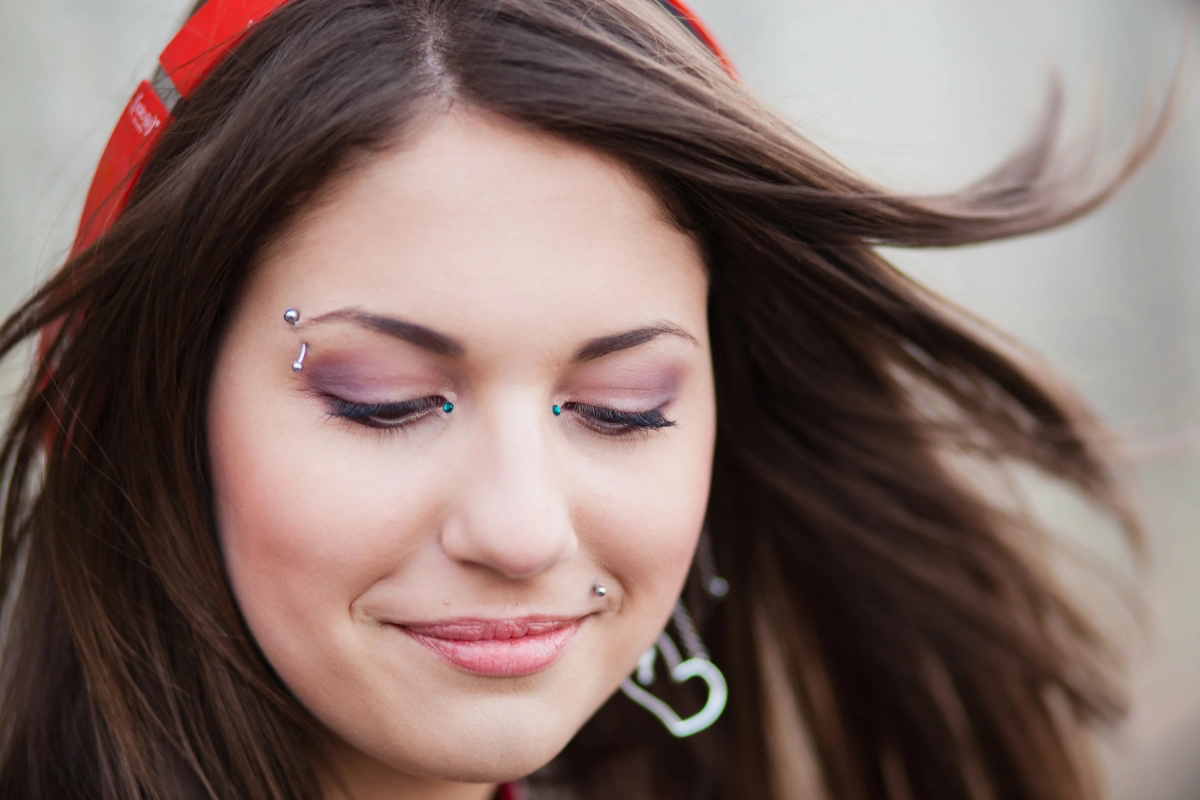
Galerie d’inspiration


Implant-Grade Titanium (ASTM F-136): This is the gold standard for initial piercings. It’s completely nickel-free, lightweight, and non-porous, minimizing the risk of allergic reactions and irritation during the crucial healing phase.
14k or 18k Solid Gold: A beautiful and safe option once healed, but be picky. It must be solid gold (not plated) and nickel-free. Brands like Anatometal or BVLA offer stunning, body-safe gold ends for your labret stud.
For a new Monroe, always start with titanium. You can switch to a decorative gold top later.
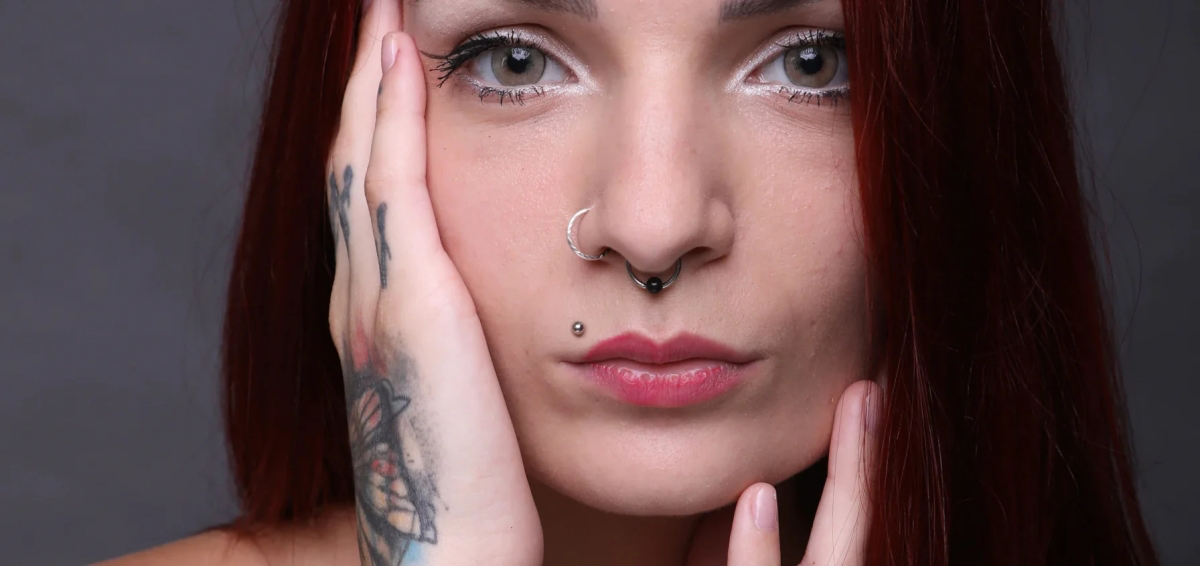
The Association of Professional Piercers (APP) highlights that improperly sized or placed oral piercings are a primary cause of gum recession and enamel damage.
This isn’t just a possibility; it’s a documented risk. The flat back of the jewelry, if it’s too long or constantly rubs, can physically push your gum line down, exposing the root of your tooth. This is why following up with your piercer to downsize the jewelry post-swelling is not optional—it’s essential for your long-term oral health.
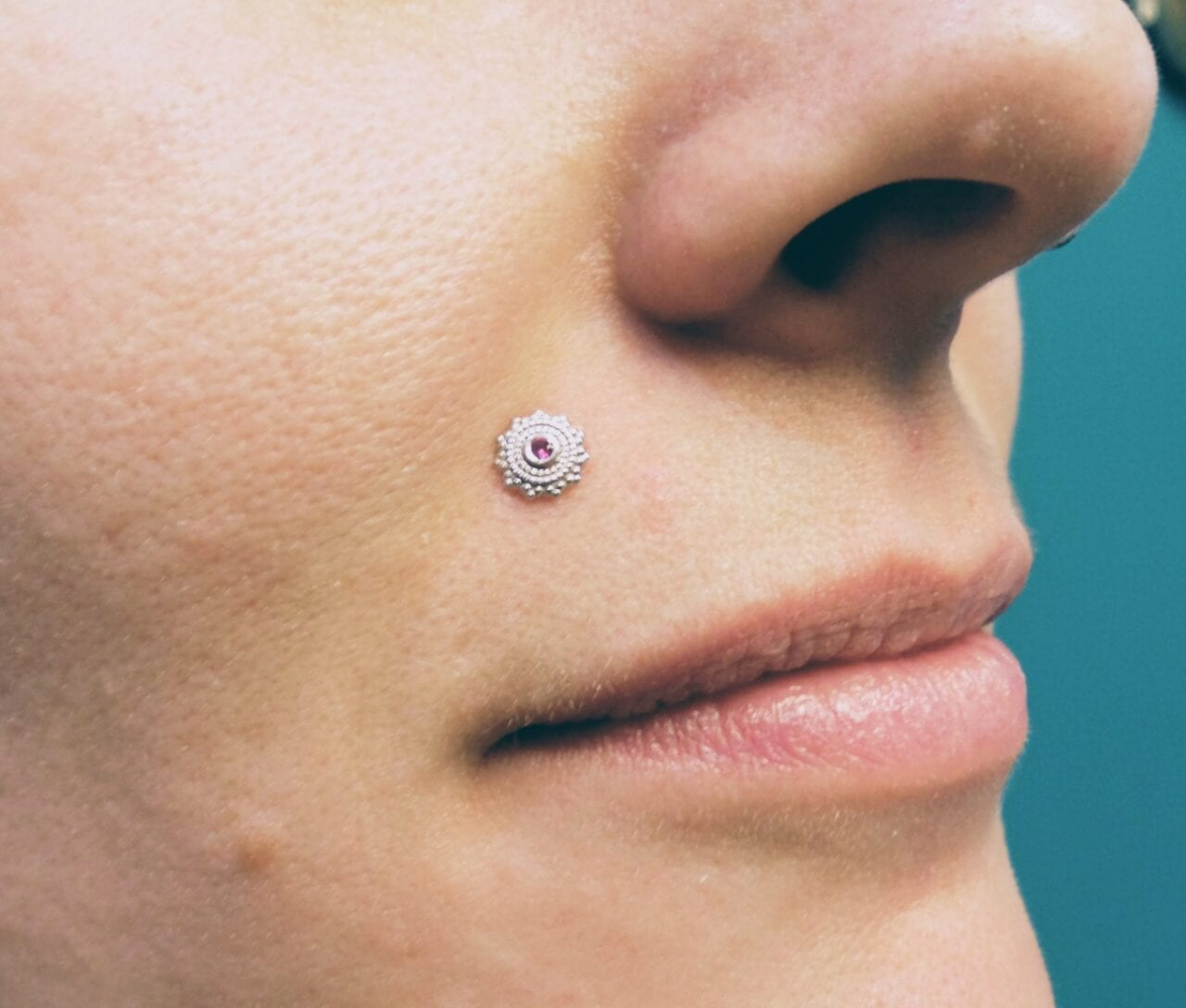
The big question: What about lipstick and makeup?
Patience is key here. For the entire healing period (typically 6-12 weeks), you must avoid getting any makeup, lipstick, lip balm, or foundation on or near the piercing site. These products can introduce bacteria and clog the fistula (the healing channel), leading to infection or irritation. Once fully healed, you can resume your routine, but be sure to clean the jewelry thoroughly at the end of the day to remove any product residue.

During healing, your piercing’s worst enemies are often simple habits. To keep things on track, avoid:
- Using mouthwash containing alcohol, which irritates and dries out the tissue. Opt for a gentle, alcohol-free rinse like Biotene.
- Playing with the jewelry with your tongue or fingers. This introduces bacteria and can damage your teeth.
- Submerging the piercing in bodies of water like pools, lakes, or hot tubs.
Wondering if the Monroe piercing will ever go out of style? Unlikely. It has a timeless quality that taps into classic Hollywood glamour, reminiscent of icons like Marilyn Monroe and Cindy Crawford. While piercing trends come and go, this particular placement has an enduring elegance. It’s less about a fleeting trend and more about a personal style choice that accentuates the smile and adds a touch of asymmetrical edge to the face.










